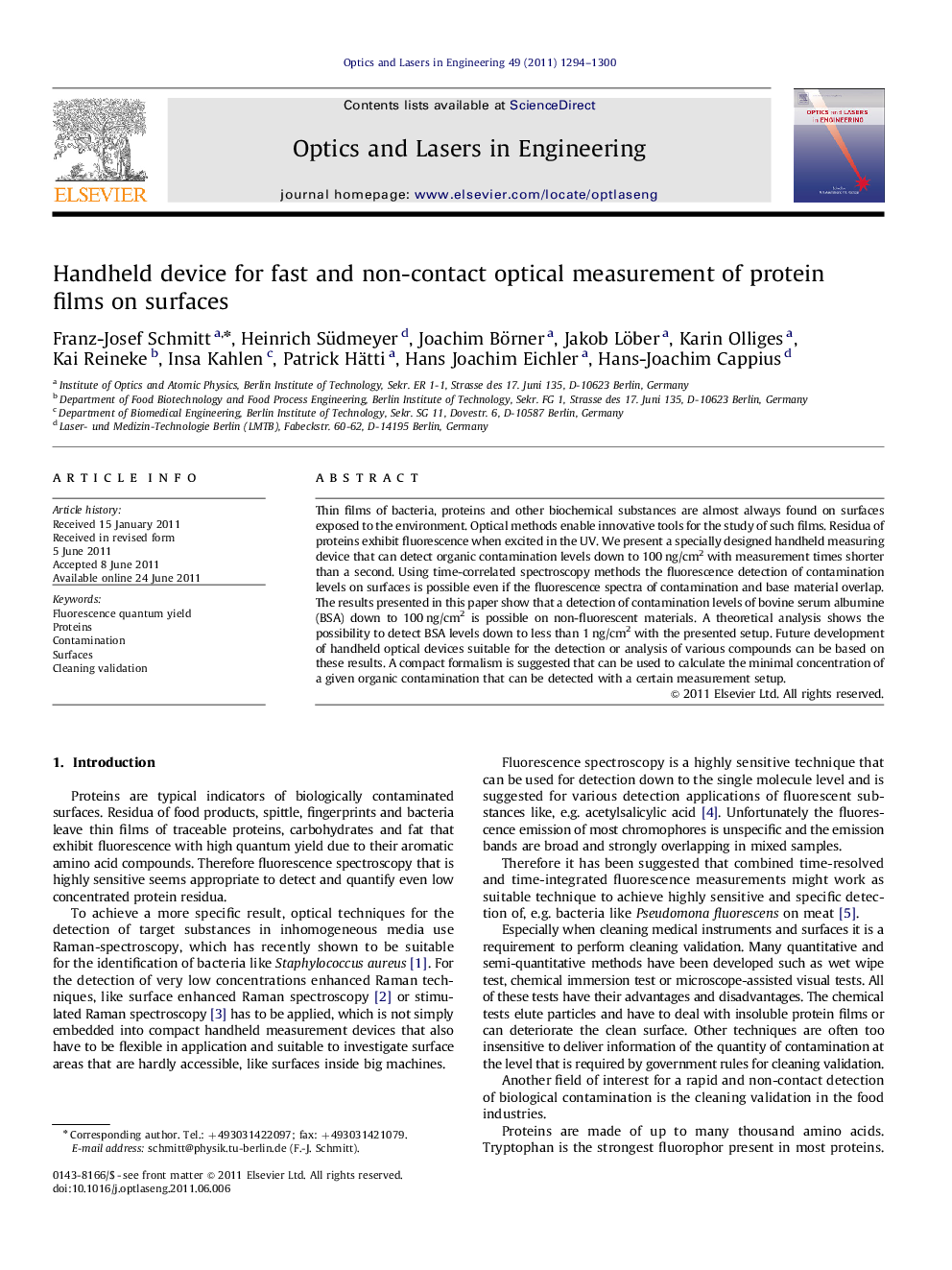| Article ID | Journal | Published Year | Pages | File Type |
|---|---|---|---|---|
| 736109 | Optics and Lasers in Engineering | 2011 | 7 Pages |
Thin films of bacteria, proteins and other biochemical substances are almost always found on surfaces exposed to the environment. Optical methods enable innovative tools for the study of such films. Residua of proteins exhibit fluorescence when excited in the UV. We present a specially designed handheld measuring device that can detect organic contamination levels down to 100 ng/cm² with measurement times shorter than a second. Using time-correlated spectroscopy methods the fluorescence detection of contamination levels on surfaces is possible even if the fluorescence spectra of contamination and base material overlap. The results presented in this paper show that a detection of contamination levels of bovine serum albumine (BSA) down to 100 ng/cm² is possible on non-fluorescent materials. A theoretical analysis shows the possibility to detect BSA levels down to less than 1 ng/cm² with the presented setup. Future development of handheld optical devices suitable for the detection or analysis of various compounds can be based on these results. A compact formalism is suggested that can be used to calculate the minimal concentration of a given organic contamination that can be detected with a certain measurement setup.
► Handheld devices for the fast detection of protein films below 1 μg/cm² within seconds. ► Handheld measurement setup for use with either time-resolved or time-integrated spectroscopy. ► Flexible and exchangeable optical setup for high signal strength even in tight edges. ► In-lumen contamination measurement with special exchangeable fiber optical applicator. ► By suppression of interfering light sources, measurement of food production is possible.
